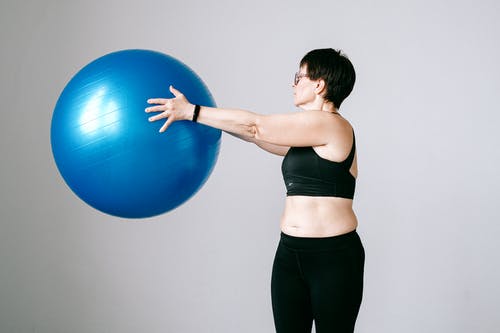Running is a double-edged sword. It’s good for cardiovascular health, stress reduction, and weight loss, but it’s also very demanding on the joints, muscles, and tendons. Fortunately, you can gain the benefits of running while decreasing the chances of injury, and it all starts with pronation.
Pronation is a term that refers to the way that one’s foot rolls in preparation for impact landing. Overpronation is when your foot rolls too far inward upon landing, risking injury from ineffective shock absorption. In this article, we discuss overpronation and how to address it using three exercises.
Why is Pronation Important?
By practicing the exercises listed below, you will likely notice improvements in your strength and landing. Although many people think that running is a way to exercise without coordination, it is a myth that running is absent of physical skill. Understanding your tendencies as a runner is crucial to your performance and safety, which is why getting to the bottom of pronation is so essential.
Understanding Your Feet: Overpronation
Overpronators are feet that land on the outside of the heel and roll inward too deeply. This effect causes the weight of the feet to fall towards the inner edge rather than the ball of the foot. Overpronators are prone to shin splints, heel spurs, and other injuries.
Following smart fitness tips and knowing your foot type will help you find the best running shoes for overpronation. Overpronators are typically low-arching or flat, but it’s best to check with an expert who can conduct a professional gait analysis and determine your pronation.
1. Jump Squats for Better Weight Transfer
While it will take time to reduce overpronation, you can practice immediate exercises to improve your landing. Activities like isometric exercises and asanas for flat feet will help you transfer your weight more evenly when you run.
Traditional gym exercises include jump squats, clamshells, and deadlifts. To perform a jump squat, place your feet just over your hips and turn your toes outward. Go into a squat and then jump up, mindful of landing softly and without buckling your knees.
2. Clamshell for Building Strength
You can reduce overpronation by strengthening the hips and the glutes. The clamshell exercise allows you to do just that, whether or not you choose to add the resistance belt for a fun physical challenge.
To get into clamshell:
- Lay on your side, with one leg over the other.
- Bend your knees, and with your feet together, lift your top leg, so that it opens (just like a clamshell). You can place a band around your legs and repeat the exercise with additional weight. Just remember to go at your own pace and work up to any extra resistance.
3. Deadlifts for Troubleshooting
When you roll inward too deeply, your muscles clench. While you may not notice this constriction as you run, you will notice this tightening as you practice single-leg deadlifts. It will become apparent that you are engaged in overpronation while practicing this exercise, as you will feel tightness reemerging again and again.
To perform a single-leg deadlift:
- Stand with both feet on the floor, gradually moving your weight to the right leg.
- Lunge forward using your hips while keeping the back aligned.
- Send your left leg back while moving your right hand towards the ground.
- Bend slightly in the knee.
Depending on your strength level, it may not be necessary to add ankle weights.
The Bottom Line
Before you hit the ground running, show your feet some love with the right shoes and the right moves to exercise safely. Happy running!
Like this post? Please share!
Be sure to follow MyStyleSpot on Instagram and Twitter to stay up to date on all things exercise and healthy living!


